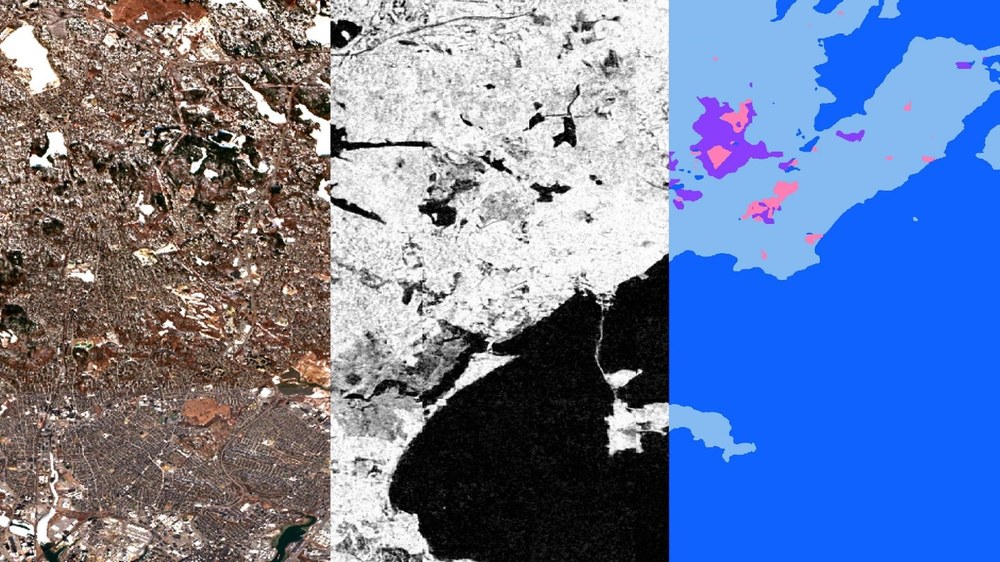New AI model for a better understanding of our planet
TerraMind, a new AI model, is now available as open source. EOC researchers were involved in its development. The model specializes in Earth observation data and beats comparable models by several percentage points in performance tests, even though it requires less computing power.
TerraMind can understand different types of data and link them together in a meaningful way. It can analyze the pixels of images as well as information broken down into units, so-called tokens, such as words or parts of words, and can also process sequences such as time series. This makes TerraMind particularly useful for earth observation. It can be used to recognize patterns and correlations across different data types and time periods. The model also uses a new method for self-optimization. The "Thinking-in-Modalities" (TiM) approach allows TerraMind to generate new training data itself from other data types in order to improve its results.
TerraMind was trained with 500 billion tokens: Satellite sensor data, geomorphology or surface feature data (such as vegetation and land use), basic location and feature descriptions (such as latitude/longitude, and simple text descriptions. TerraMesh, the geodataset created in the project specifically for training, is the largest training dataset of its kind available.
Although TerraMind was trained with 500 billion tokens, it is a small, lightweight model that requires ten times less computing power than previous standard models. This means that users can deploy it on a large scale at a lower cost, while also reducing overall energy consumption.
The new model was benchmarked against 12 common Earth observation models to measure the model's performance on real-world tasks such as land cover classification, change detection, environmental monitoring and multi-sensor and multi-temporal analysis. The test showed that TerraMind outperformed other models on these tasks by 8% or more.
TerraMind was developed by European researchers as part of the DLR-MF-led FAST-EO initiative and trained on the Jülich Supercomputing Centre's infrastructure with the help of its expertise. The FAST-EO consortium comprises DLR, Forschungszentrum Jülich, IBM Research Europe and KP Labs and is supported and funded by the ESA Φ-Lab. FAST-EO aims to improve access to geo-foundation models for the Earth observation community.
The model has therefore been published by IBM and ESA as open source on Hugging Face, a platform that allows users to share models and datasets for machine learning.
TerraMind was developed by European researchers as part of the DLR-MF-led FAST-EO initiative and trained on the Jülich Supercomputing Centre's infrastructure with the help of its expertise. The FAST-EO consortium comprises DLR, Forschungszentrum Jülich, IBM Research Europe and KP Labs and is supported and funded by the ESA Φ-Lab. FAST-EO aims to improve access to geo-foundation models for the Earth observation community.
The model has therefore been published by IBM and ESA as open source on Hugging Face, a platform that allows users to share models and datasets for machine learning.
Links

